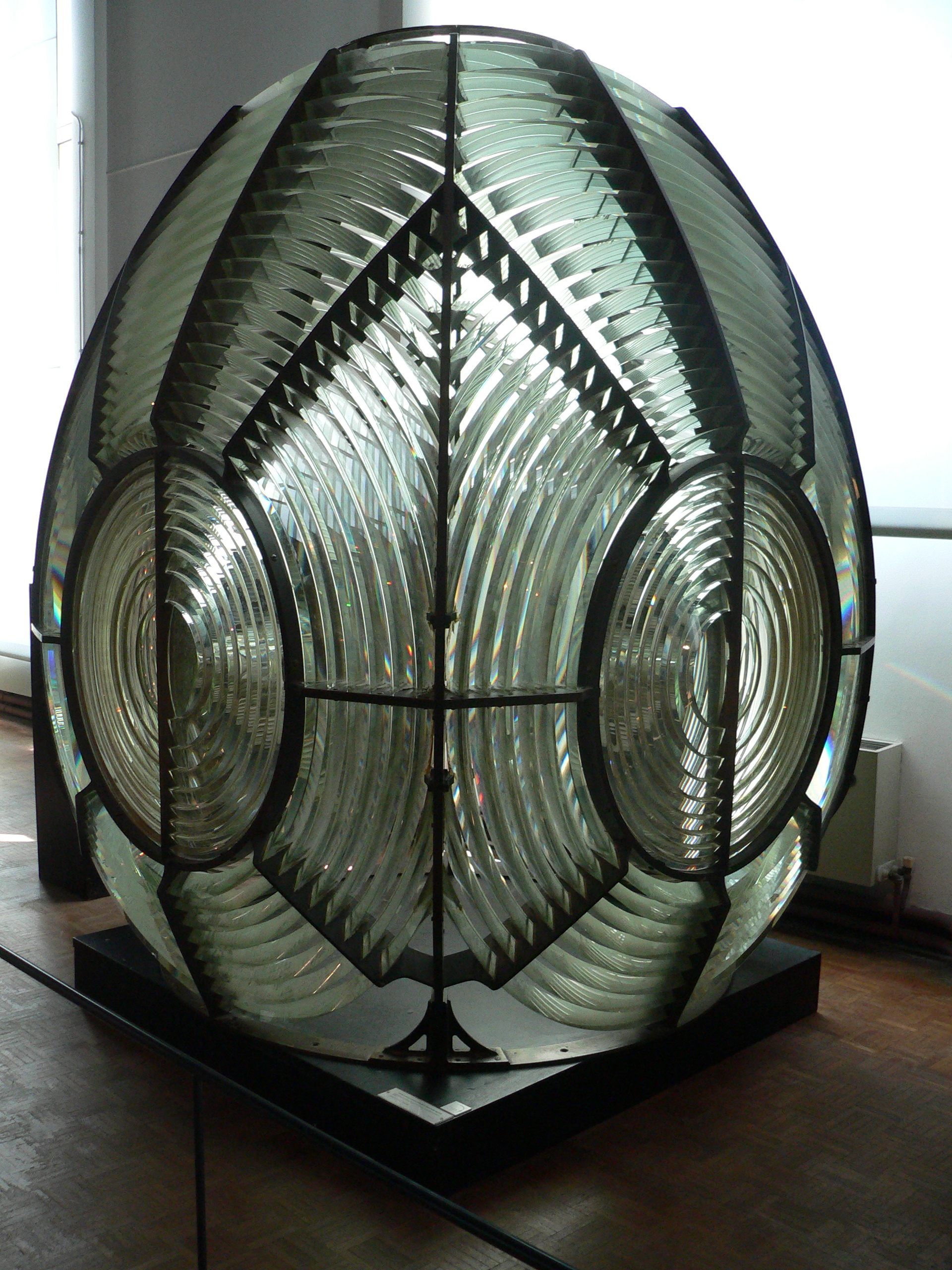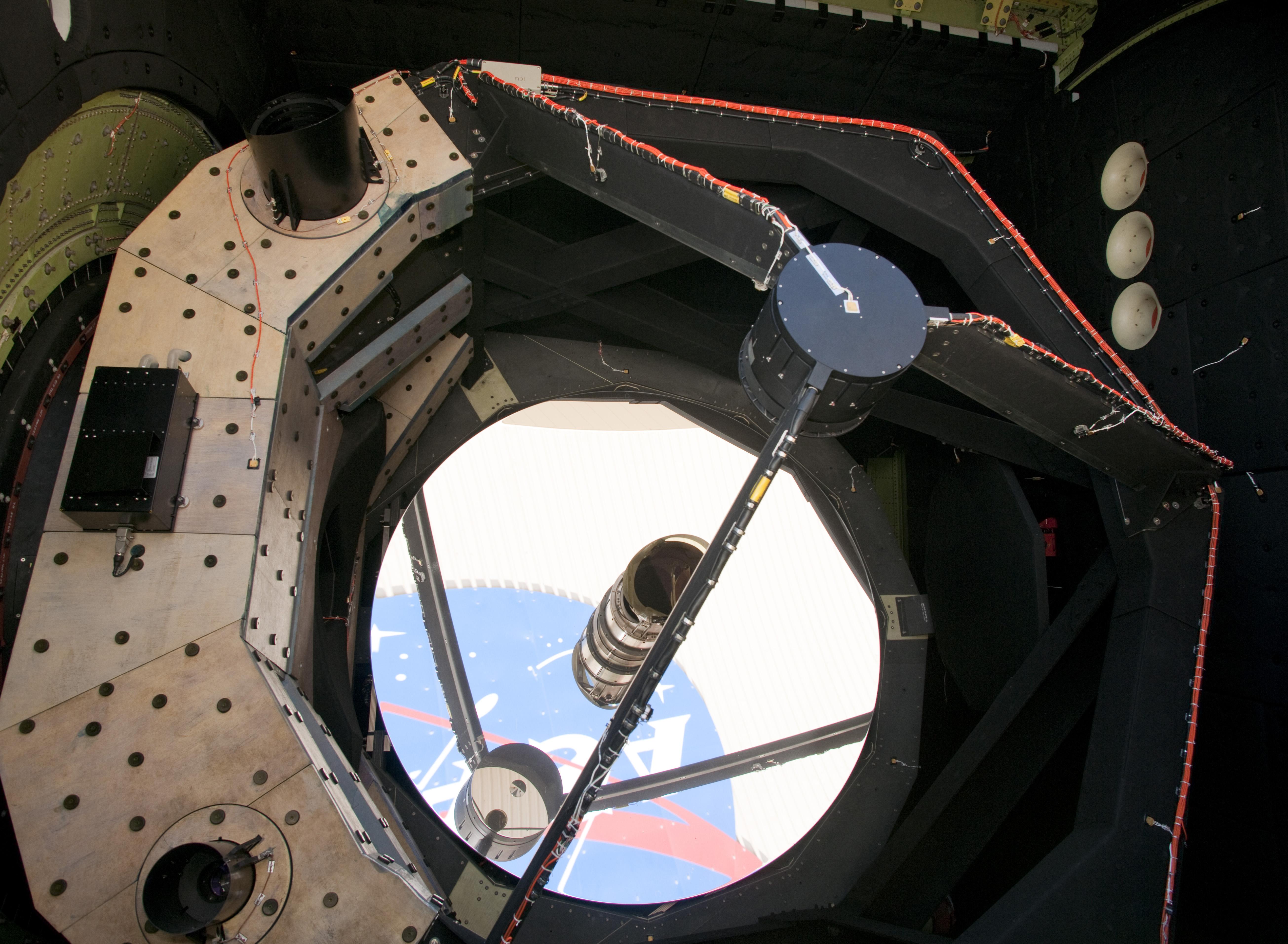|
Catadioptric System
A catadioptric optical system is one where refraction and Reflection (physics), reflection are combined in an optical system, usually via lens (optics), lenses (dioptrics) and curved mirrors (catoptrics). Catadioptric combinations are used in focusing systems such as searchlights, headlamps, early lighthouse focusing systems, optical telescopes, microscopes, and telephoto photographic lens, lenses. Other optical systems that use lenses and mirrors are also referred to as "catadioptric", such as surveillance catadioptric sensors. Early catadioptric systems Catadioptric combinations have been used for many early optical systems. In the 1820s, Augustin-Jean Fresnel developed several catadioptric lighthouse reflector versions of his Fresnel lens. Léon Foucault developed a catadioptric microscope in 1859 to counteract aberrations of using a lens to image objects at high power. In 1876 a French engineer, A. Mangin, invented what has come to be called the Mangin mirror, a concave glas ... [...More Info...] [...Related Items...] OR: [Wikipedia] [Google] [Baidu] |
Maksutov 150mm
Maksutov may refer to: * Maksutov telescope, a catadioptric telescope with a meniscus corrector . * Dmitry Dmitrievich Maksutov (1896–1964), Russian optical engineer, inventor of the Maksutov telescope * Maksutov (crater), a lunar crater named after Dmitry Dmitrievich Maksutov * 2568 Maksutov, a main-belt asteroid named after Dmitry Dmitrievich Maksutov See also * Maksutov (surname) {{disambiguation ... [...More Info...] [...Related Items...] OR: [Wikipedia] [Google] [Baidu] |
Fresnel Lens
A Fresnel lens ( ; ; or ) is a type of composite compact lens (optics), lens which reduces the amount of material required compared to a conventional lens by dividing the lens into a set of concentric annular sections. The simpler Dioptrics, dioptric (purely refraction, refractive) form of the lens was first proposed by Georges-Louis Leclerc, Comte de Buffon, and independently reinvented by the French physicist Augustin-Jean Fresnel (1788–1827) for use in lighthouses. The Catadioptric system, catadioptric (combining refraction and reflection) form of the lens, entirely invented by Fresnel, has outer Prism (optics), prismatic elements that use total internal reflection as well as refraction to capture more oblique light from the light source and add it to the beam, making it visible at greater distances. The design allows the construction of lenses of large aperture and short focal length without the mass and volume of material that would be required by a lens of conventional ... [...More Info...] [...Related Items...] OR: [Wikipedia] [Google] [Baidu] |
Coma (optics)
In optics (especially telescopes), the coma (), or comatic aberration, in an optical system refers to aberration inherent to certain optical designs or due to imperfection in the lens or other components that results in off-axis point sources such as stars appearing distorted, appearing to have a tail (coma) like a comet. Specifically, coma is defined as a variation in magnification over the entrance pupil. In refractive or diffractive optical systems, especially those imaging a wide spectral range, coma can be a function of wavelength, in which case it is also a form of chromatic aberration. Overview Coma is an inherent property of telescopes using parabolic mirrors. Unlike a spherical mirror, a bundle of parallel rays parallel to the optical axis will be perfectly focused to a point (the mirror is free of spherical aberration), no matter where they strike the mirror. However, this is only true if the rays are parallel to the axis of the parabola. When the incoming rays str ... [...More Info...] [...Related Items...] OR: [Wikipedia] [Google] [Baidu] |
Reflecting Telescope
A reflecting telescope (also called a reflector) is a telescope that uses a single or a combination of curved mirrors that reflect light and form an image. The reflecting telescope was invented in the 17th century by Isaac Newton as an alternative to the refracting telescope which, at that time, was a design that suffered from severe chromatic aberration. Although reflecting telescopes produce other types of optical aberrations, it is a design that allows for very large diameter Objective (optics), objectives. Almost all of the major telescopes used in astronomy research are reflectors. Many variant forms are in use and some employ extra optical elements to improve image quality or place the image in a mechanically advantageous position. Since reflecting telescopes use mirrors, the design is sometimes referred to as a catoptrics, catoptric telescope. From the time of Newton to the 1800s, the mirror itself was made of metalusually speculum metal. This type included Newton's first ... [...More Info...] [...Related Items...] OR: [Wikipedia] [Google] [Baidu] |
Ludwig Schupmann
Ludwig Ignaz Schupmann (23 January 1851 in Geseke (Westphalia), Kingdom of Prussia – 2 October 1920 also in Geseke) was a German professor of architecture Architecture is the art and technique of designing and building, as distinguished from the skills associated with construction. It is both the process and the product of sketching, conceiving, planning, designing, and construction, constructi ... and an optical designer. He is principally remembered today for his Medial and Brachymedial telescopes, types of Catadioptric system, catadioptric reflecting-refracting telescopes with Mangin mirrors that eliminate chromatic aberrations while using common optical glasses. Used in early lunar studies, they are used now in double-star work. Schupmann candelabra (a special street light) In 1882, electric street lighting was put into operation in the center of the city of Berlin (Potsdamer Platz and Leipziger Straße) for which the company Siemens & Halske supplied a total of 36 c ... [...More Info...] [...Related Items...] OR: [Wikipedia] [Google] [Baidu] |
Objective (optics)
In optical engineering, an objective is an optical element that gathers light from an object being observed and Focus (optics), focuses the ray (optics), light rays from it to produce a real image of the object. Objectives can be a single Lens (optics), lens or mirror, or combinations of several optical elements. They are used in microscopes, binoculars, telescopes, cameras, slide projectors, CD players and many other optical instruments. Objectives are also called object lenses, object glasses, or objective glasses. Microscope objectives The objective lens of a microscope is the one at the bottom near the sample. At its simplest, it is a very high-powered magnifying glass, with very short focal length. This is brought very close to the specimen being examined so that the light from the specimen comes to a focus inside the microscope tube. The objective itself is usually a cylinder containing one or more lenses that are typically made of glass; its function is to collect light fr ... [...More Info...] [...Related Items...] OR: [Wikipedia] [Google] [Baidu] |
Refracting Telescope
A refracting telescope (also called a refractor) is a type of optical telescope that uses a lens (optics), lens as its objective (optics), objective to form an image (also referred to a dioptrics, dioptric telescope). The refracting telescope design was originally used in spyglasses and astronomy, astronomical telescopes but is also used for long-focus lens, long-focus camera lenses. Although large refracting telescopes were very popular in the second half of the 19th century, for most research purposes, the refracting telescope has been superseded by the reflecting telescope, which allows larger apertures. A refractor's magnification is calculated by dividing the focal length of the objective lens by that of the eyepiece. Refracting telescopes typically have a lens at the front, then a optical train, long tube, then an eyepiece or instrumentation at the rear, where the telescope view comes to focus. Originally, telescopes had an objective of one element, but a century later, tw ... [...More Info...] [...Related Items...] OR: [Wikipedia] [Google] [Baidu] |
Dialyte Lens
A dialyte lens (sometimes called a ''dialyt'') is a compound lens design that corrects optical aberrations where the lens elements are widely air-spaced. The design is used to save on the amount of glass used for specific elements or where elements can not be cemented because they have dissimilar curvatures. The word ''dialyte'' means "parted", "loose" or "separated" in Greek. Design In its simplest form, a ''dialyte'' can be formed by separating the elements in a cemented achromatic doublet of positive and negative lenses, although the powers of the individual elements must be increased to compensate. Applications Telescopes The idea of widely separating the color correcting elements of a lens dates back to W. F. Hamilton's 1814 catadioptric Hamiltonian telescope and Alexander Rogers' 1828 proposals for a ''dialytic refractor''. The goal was to combine a large crown glass objective with a much smaller flint glass downstream to make an achromatic lens since flint glass at that ... [...More Info...] [...Related Items...] OR: [Wikipedia] [Google] [Baidu] |
Field Of View
The field of view (FOV) is the angle, angular extent of the observable world that is visual perception, seen at any given moment. In the case of optical instruments or sensors, it is a solid angle through which a detector is sensitive to electromagnetic radiation. It is further relevant in ''angle of view, photography''. Humans and animals In the context of human and primate vision, the term "field of view" is typically only used in the sense of a restriction to what is visible by external apparatus, like when wearing spectacles or virtual reality goggles. Note that eye movements are allowed in the definition but do not change the field of view when understood this way. If the analogy of the eye's retina working as a sensor is drawn upon, the corresponding concept in human (and much of animal vision) is the visual field. It is defined as "the number of degrees of visual angle during stable fixation of the eyes".Strasburger, Hans; Pöppel, Ernst (2002). Visual Field. In G. A ... [...More Info...] [...Related Items...] OR: [Wikipedia] [Google] [Baidu] |
Optical Telescopes
An optical telescope gathers and focuses light mainly from the visible part of the electromagnetic spectrum, to create a magnified image for direct visual inspection, to make a photograph, or to collect data through electronic image sensors. There are three primary types of optical telescope : * ''Refracting telescopes'', which use lenses and less commonly also prisms ( dioptrics) * ''Reflecting telescopes'', which use mirrors ( catoptrics) * '' Catadioptric telescopes'', which combine lenses and mirrors An optical telescope's ability to resolve small details is directly related to the diameter (or aperture) of its objective (the primary lens or mirror that collects and focuses the light), and its light-gathering power is related to the area of the objective. The larger the objective, the more light the telescope collects and the finer detail it resolves. People use optical telescopes (including monoculars and binoculars) for outdoor activities such as observational astr ... [...More Info...] [...Related Items...] OR: [Wikipedia] [Google] [Baidu] |
Catadioptric System
A catadioptric optical system is one where refraction and Reflection (physics), reflection are combined in an optical system, usually via lens (optics), lenses (dioptrics) and curved mirrors (catoptrics). Catadioptric combinations are used in focusing systems such as searchlights, headlamps, early lighthouse focusing systems, optical telescopes, microscopes, and telephoto photographic lens, lenses. Other optical systems that use lenses and mirrors are also referred to as "catadioptric", such as surveillance catadioptric sensors. Early catadioptric systems Catadioptric combinations have been used for many early optical systems. In the 1820s, Augustin-Jean Fresnel developed several catadioptric lighthouse reflector versions of his Fresnel lens. Léon Foucault developed a catadioptric microscope in 1859 to counteract aberrations of using a lens to image objects at high power. In 1876 a French engineer, A. Mangin, invented what has come to be called the Mangin mirror, a concave glas ... [...More Info...] [...Related Items...] OR: [Wikipedia] [Google] [Baidu] |






